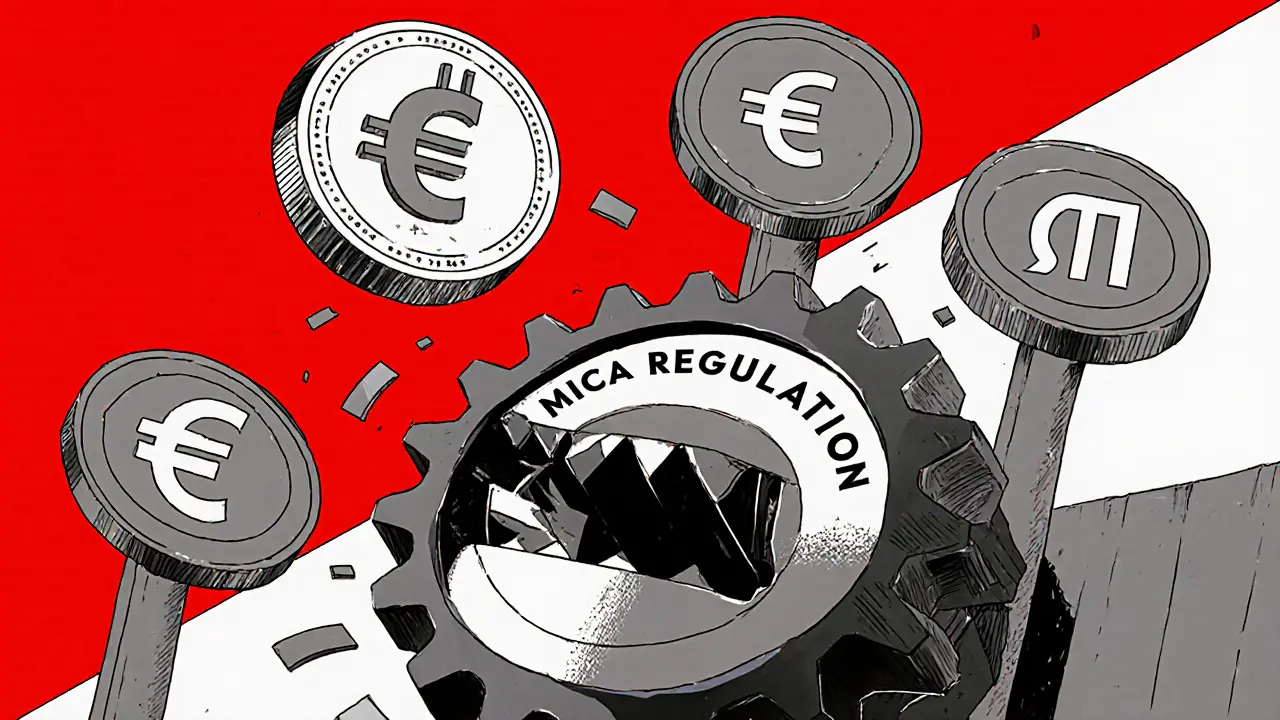
The EU's MiCA regulation banned trading of non-compliant stablecoins like USDT as of early 2025. Learn why USDT doesn't qualify, what stablecoins are now legal, and how this compares to U.S. rules.
When you hear stablecoin compliance, the set of legal and operational rules that stablecoin issuers must follow to operate legally. Also known as crypto regulation for pegged tokens, it's what keeps stablecoins from becoming digital wild west—where anyone can mint coins with no backing, no oversight, and no accountability. This isn’t about banning crypto. It’s about making sure that when a coin claims to be worth $1, it actually is—and that the company behind it can’t vanish overnight with your money.
Stablecoin compliance isn’t one rule. It’s a mix of KYC for stablecoins, the process of verifying user identities before allowing transactions with stablecoins, AML crypto, anti-money laundering checks that track suspicious flows between wallets and exchanges, and CBDC, central bank digital currencies that governments are building to compete with private stablecoins. These aren’t abstract ideas—they’re what caused exchanges like COINBIG to avoid fiat on-ramps, or led Iraq’s central bank to ban crypto entirely. When a stablecoin issuer fails KYC, regulators shut them down. When they skip AML, they become tools for fraud. And when governments push CBDCs, private stablecoins get squeezed.
Look at the posts below. You’ll find real cases: exchanges that vanished because they ignored compliance, airdrops that turned into scams because no one checked who was claiming them, and countries like Malta that made compliance their selling point. Some tokens pretend to be stable but have no reserve audits. Others hide behind vague terms like "decentralized" to avoid oversight. The truth? If a stablecoin doesn’t answer to regulators, it doesn’t answer to you. That’s why compliance isn’t a boring legal footnote—it’s the line between a digital dollar that works and a digital ghost that disappears.
What you’ll find here aren’t theory-heavy white papers. These are real stories from 2024 and 2025: how a single missing audit killed a token, how a fake airdrop used fake compliance logos to trick users, and why some exchanges still operate without any regulatory license. If you’re holding stablecoins, trading them, or even just curious about them—this is what you need to know before your next move.

The EU's MiCA regulation banned trading of non-compliant stablecoins like USDT as of early 2025. Learn why USDT doesn't qualify, what stablecoins are now legal, and how this compares to U.S. rules.